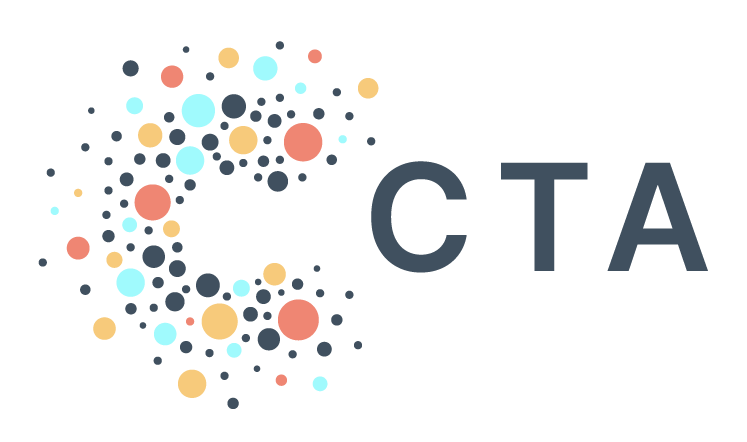Goodbye annual performance reviews.
Let’s be honest: in our day-to-day and one-on-one meetings, it’s not always easy to give the feedback we need to - whether positive or constructive. We flipped the script on “performance reviews” and made it easier for managers to give feedback, and for our team members to know where they stand at any given time.
“Performance” reviews
In starting CTA, I was committed to building the place where great people wanted to do their best work. That meant a lot of things - paying well, providing fantastic benefits, and keeping a fast pace while balancing holistic human needs.
A huge part of people’s happiness at work comes from knowing that they are learning, growing, and honing their skills. At the same time, the concept of “performance reviews” is reviled - the process is usually a slog, not-helpful, and too loaded to actually be productive.
And yet, everyone agrees that kind, candid feedback is so critical to getting shit done, staff satisfaction, and to actual personal, professional, and organizational growth.
Changing things up
After a few years of doing regular old annual reviews, trying desperately to make them as useful as possible to managers and staff, we sat down and we thought about our goals. CTA’s leadership team crafted, and the rest of the team vetted our objectives:
Everyone should have consistent clarity on where they stand in their role’s expectations.
Reviews shouldn’t feel heavy, weighty, or difficult. Feedback should be straightforward, simple, and unloaded.
The process should empower managers and staff to quickly review themselves and each other - and a tool to allow for ease of use.
Create space for meaningful development and growth conversations based in day-to-day scenarios.
With these objectives in mind, we built out a quarterly review process with a few ratings and a few spaces for written feedback. You might be thinking - Wait, that sounds like more work, not less - but hear me out. This quarterly process included a) just a few questions, b) baked in timeliness, and c) shorter conversations covering a shorter time period. If you think about it, it is WAY easier to remember and provide feedback every 90 days than it is to struggle to remember and craft constructive feedback about something that happened 360 days ago.
So here’s how we structure our cadence:
Four times a year, managers and staff write a short review. The template is the same every time—most of the questions are ratings and a few are open answers.
Once a year we make it a 360° review. We use the same template, but we ask for more feedback on each person from additional team members.
We don’t let our quarterly reviews fall in December, which is quite possibly the worst month to ever try to craft and convey thoughtful feedback. We stagger our quarters to take the load off.
We schedule in advance so folks have plenty of notice to refine a few thoughts and put them into the review template.
We use a great tool called Fellow - which has review templates and makes requesting and tracking feedback super simple. This isn’t the only tool out there for this, but it really works for us.
How we broke down the questionnaire:
First, our scoring instrument. We started from how we wanted to think about job expectations and team expectations for each person. Some definitions:
From there, we built out the template:
See the whole template HERE
How did it go?
Okay so that’s how we did it. But how is it going? We kicked off this process in early 2024 and worked with our team through 3 “quarterly review” cycles last year. Yes, 3 does not equal 4, and that’s because it was an election year. The nice thing about this model is it’s flexible like that.
The first round was a fairly easy transition for folks. We were building new muscles and changing our mindsets, but asking for a much lower lift. Reviews weren’t about this big annual check in on everything and anything and the only chance to give feedback. Now, a review was a check in on how the individual thought they were doing as related to their job expectations and role in the organization, and how their manager evaluated their performance that quarter.
Despite the slight build up period, the feedback from the team on our process was astoundingly positive. “Easier to have these convos!” “Felt like I had enough time for it!” “Much better!”
In addition to the good reception from our team, our leadership team has consistently felt the impact of changing up our review process. It is FAR easier to have conversations about where people can grow in their roles and make CTA better when we are down in the weeds more often, and not trying to summarize a year’s worth of work. Connecting everything to role expectations also makes growth and development conversations both easier and more frequent – a win for everyone.
TLDR - in our day-to-day and one-on-one meetings it’s not always easy to give the feedback we need to - whether positive or constructive. By setting a clock every 90 days and creating a container for that two-way conversation between managers and reports, we changed the dynamic on making sure feedback was fresh, consistent, and easy to understand.
We are extremely bullish that this is pushing CTA to be a better organization, creating and maintaining a better place to work, and ultimately supporting our staff to grow. Hopefully it helps your organization think about feedback, reviews, and innovative ways to think about development.
What’s working well for your organization? What ideas would you add to this? We’re keenly interested to keep improving our process, and would love to hear about yours!


